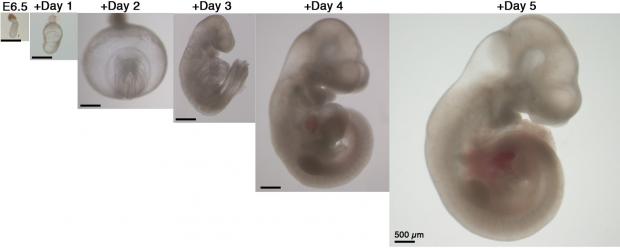
Breaking News
 Third Time's The Charm: SpaceX Starship Megarocket Blasts Off From Starbase
Third Time's The Charm: SpaceX Starship Megarocket Blasts Off From Starbase
 First Ever: Technocracy Roundtable Streaming Today
First Ever: Technocracy Roundtable Streaming Today
 Comcast Network Horror: Summer Ratings Crash 49%, Advertisers In Major Bind
Comcast Network Horror: Summer Ratings Crash 49%, Advertisers In Major Bind
Top Tech News
 Magnetic Fields Reshape the Movement of Sound Waves in a Stunning Discovery
Magnetic Fields Reshape the Movement of Sound Waves in a Stunning Discovery
 There are studies that have shown that there is a peptide that can completely regenerate nerves
There are studies that have shown that there is a peptide that can completely regenerate nerves
 Swedish startup unveils Starlink alternative - that Musk can't switch off
Swedish startup unveils Starlink alternative - that Musk can't switch off
 Video Games At 30,000 Feet? Starlink's Airline Rollout Is Making It Reality
Video Games At 30,000 Feet? Starlink's Airline Rollout Is Making It Reality
 Automating Pregnancy through Robot Surrogates
Automating Pregnancy through Robot Surrogates
 SpaceX launches Space Force's X-37B space plane on 8th mystery mission (video)
SpaceX launches Space Force's X-37B space plane on 8th mystery mission (video)
 This New Bionic Knee Is Changing the Game for Lower Leg Amputees
This New Bionic Knee Is Changing the Game for Lower Leg Amputees
 Grok 4 Vending Machine Win, Stealth Grok 4 coding Leading to Possible AGI with Grok 5
Grok 4 Vending Machine Win, Stealth Grok 4 coding Leading to Possible AGI with Grok 5
Mouse embryo is grown in a lab from stem cells and features beating heart...

A mouse embryo developed from stems cells has a beating heart and is starting to develop muscles, a gut and nervous system while it grows inside a lab at the University of Virginia.
Scientists sparked development of the cells by weaving the different types together, allowing it to become 'the first in vitro model of a mammalian embryo with so many tissues to be built from stem cells,' the team shared in a press release.
This is also the first version complete with a notochord, which is a cartilaginous skeletal rod supporting the body in all embryos and 'is a definite trait of vertebrate animals,' according to the researchers.
The team hopes the breakthrough will assist researchers with understanding mammalian development, battle diseases, create new drugs and grow tissues and organs for human transplants.
Christine Thisse, Ph.D., of UVA's Department of Cell Biology, said in a statement: 'We found a way to instruct aggregates of stem cells to initiate embryonic development.
'In response to this controlled instruction, the aggregates develop into embryo-like entities in a process that recapitulate the embryonic steps one-by-one.
'What is amazing is that we can get the variety of tissues that are present in an authentic mouse embryo.'
The use of stem cells has opened up a new world of science, allowing experts to use the special cells to create other cells with different functions.

 CODEX 9/11
CODEX 9/11  HERE COMES THE MOTHERSHIP
HERE COMES THE MOTHERSHIP Venus Aerospace Hypersonic Engine Breakthroughs
Venus Aerospace Hypersonic Engine Breakthroughs

